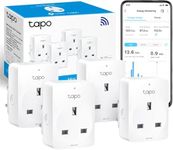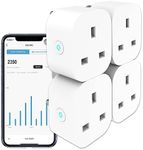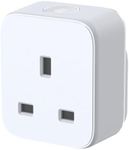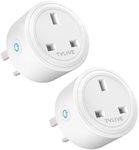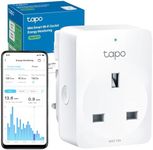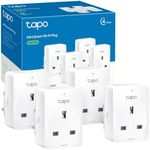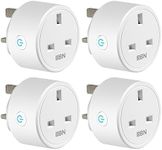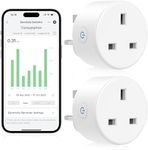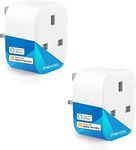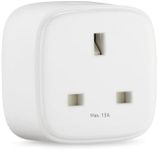Buying Guide for the Best Smart Plugs
Smart plugs are a fantastic way to bring automation and remote control to your home appliances. They allow you to turn devices on or off using your smartphone, voice commands, or set schedules. When choosing a smart plug, it's important to consider how it will fit into your existing smart home ecosystem and what features are most important for your needs. Understanding the key specifications will help you make an informed decision and ensure that the smart plug you choose will meet your expectations and requirements.CompatibilityCompatibility refers to whether the smart plug can work with your existing smart home system, such as Amazon Alexa, Google Assistant, or Apple HomeKit. This is important because it determines how you can control the plug and integrate it with other smart devices. If you already use a specific smart home platform, look for a smart plug that supports it. If you're starting from scratch, consider which platform you might want to use in the future and choose a plug that offers broad compatibility.
Wi-Fi ConnectivityWi-Fi connectivity is the ability of the smart plug to connect to your home network, allowing you to control it remotely. This is crucial for accessing the plug from your smartphone or through voice commands. Most smart plugs operate on a 2.4 GHz Wi-Fi band, which is common in many homes. Ensure your home network supports this frequency. If you have a dual-band router, make sure the plug can connect to the appropriate band. Choose a plug with reliable connectivity to avoid issues with responsiveness.
Energy MonitoringEnergy monitoring is a feature that allows the smart plug to track the power consumption of the connected device. This is important for understanding your energy usage and identifying ways to save on electricity bills. Some smart plugs provide detailed reports and insights into your energy consumption patterns. If you're interested in reducing your energy footprint or managing your electricity costs, look for a smart plug with robust energy monitoring capabilities.
Scheduling and AutomationScheduling and automation features allow you to set specific times for the smart plug to turn on or off, or to create routines that trigger based on certain conditions. This is important for convenience and energy efficiency, as it can help automate daily tasks and reduce unnecessary power usage. Consider how you plan to use the smart plug and whether you need advanced scheduling options or simple on/off timers. Choose a plug that offers the level of automation that suits your lifestyle.
Size and DesignThe size and design of a smart plug can affect how it fits into your home and whether it blocks adjacent outlets. This is important for ensuring that the plug is practical and doesn't interfere with other devices. Some smart plugs are compact and designed to fit into tight spaces, while others may be bulkier. Consider where you plan to use the plug and whether space is a concern. Choose a design that complements your home and fits your available outlets.
Load CapacityLoad capacity refers to the maximum amount of power the smart plug can handle. This is important for safety and ensuring that the plug can support the devices you plan to connect. Most smart plugs can handle standard household appliances, but if you intend to use it with high-power devices like heaters or air conditioners, check the plug's load capacity. Choose a plug with a capacity that matches or exceeds the power requirements of your devices.
